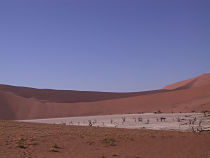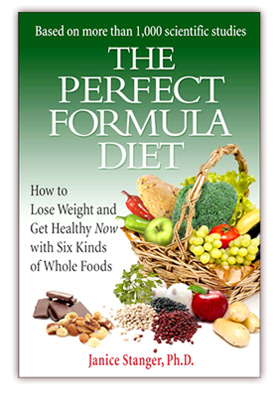Sodium Demonstrates That More is Not Always Better
In April, an Institute of Medicine (IOM) report once again highlighted the health consequences of eating too much salt. The report’s recommendation that the FDA should regulate salt in restaurant and processed food is news. Repeating information that the sodium in salt worsens high blood pressure merely reinforced what the majority of people likely already had heard.
The most important lesson hidden in the IOM report is the message that, in achieving ideal nutrition, more is not always better.
You may not realize that you do need some sodium, an essential mineral, in your diet.
When dissolved in a fluid (as it is in your body), sodium becomes electrically charged and is called an electrolyte. Sodium is essential for muscle and nerve function. If you lose too much sodium (for example, through heavy sweating), you may experience weakness, nausea, vomiting, cramping, and seizures.
Barring major sodium loss, you don’t need to worry about getting enough of this mineral. In fact, although the USDA recommends maximum amounts of sodium to eat, they do not even bother to suggest a minimum amount. You will get all the sodium you need on just about any reasonable diet.
Your kidneys actively regulate the amount of sodium and other electrolytes in your blood. When you eat too much salt, you make your body’s task of regulating these substances way more difficult, and health consequences may be serious. Cells are damaged by either too much or too little sodium in the fluid surrounding them. We all understand and accept the fact that, for salt, more is not always better. But you might not know that this general principle applies to all nutrients. The fact is, your body is an exquisitely delicate and complex system designed to work within narrow limits. Your body wants to maintain certain ratios, or proportions, between different kinds of nutrients. Too much of a good thing can tip this fine balance into illness and malfunctioning.
Too much protein is more toxic than too much salt. Yet you may chow down animal foods multiple times a day in the mistaken belief that you “need the protein.” Similarly, you may take vitamin and mineral supplements as an “insurance policy” to make sure you get enough of these vital nutrients. Yet numerous studies show manmade supplements of isolated nutrients can be harmful.

Salt is so common that in many places it is simply free for the taking, as at this dried up salt lake
Since too much of just about any nutrient can be hazardous, why has the IOM chosen to attack sodium? One reason might be that salt is a safe target. Salt is cheap. Salt is free for the taking in ocean water and even is lying about many places on the surface of the earth, waiting to be picked up. Since salt is so readily and inexpensively available, there is no powerful salt lobby for politicians and government agencies to fear. Contrast this with the multibillion dollar meat and dairy industries, which have crowds of well-paid lobbyists to oppose even the tiniest suggestion that their products are harmful.
Whole plant foods naturally package the exact amount of nutrients that your body thrives on. In addition, fruits and vegetables are high in the mineral potassium, which helps blunt the effect of eating too much salt.
The best way to make sure you get the perfect amount of sodium is to eat a balance of home prepared fruits, vegetables, beans, potatoes, whole grains, nuts, seeds, herbs, and spices. Avoid animal and manufactured foods. Only about 10% of the sodium you consume comes from whole foods – the rest is added during cooking and in processed food factories. When you cook, learn to enjoy the taste of food prepared without salt. This taste transition should take about three weeks. My ex-husband and I abruptly gave up salt in 1980, when he was taken to the emergency room with high blood pressure. He had gone to the UCSF dental school for some dental work. Because the students were on a medical campus, they took his blood pressure (not routine in dentistry). It was so high that they cancelled his appointment and walked him over the emergency room.
Much to his credit, my ex-husband decided to use lifestyle changes instead of pill-popping to get his blood pressure under control, and it worked. One of the changes we made was to just stop using salt and eating salty foods. The taste transition was so easy I don’t even remember it. I have been avoiding salty foods for 30 years now, and honestly just don’t even like the taste of salt any more. Instead, I enjoy dozens of herbs and spices.
You can make this same transition. Reeducated taste buds are your best salt substitute. Eat whole plant foods, unsalted or with a few salt crystals on the surface, and you will have health benefits that go way beyond lower sodium and blood pressure. You will get optimal amounts of all nutrients – not just sodium – by following this simple, delicious eating plan.
Remember, more is not better when it comes to your health. You are aiming for the bulls eye in the center of the target – not the outer circle on top (too much) or on the bottom (too little).
Intrigued? Now you can use our Whole Foods Blog Finder to target informative, fun postings on plant-based nutrition. Quick information at no cost!
Blog by Janice Stanger, Ph.D. Janice authored The Perfect Formula Diet, a nutrition book built on sustainable food choices. Enjoy six kinds of whole foods for permanent, hunger-free weight loss and health.
Tags: getting healthy, high blood pressure, Janice Stanger, nutrition facts, Plant-based nutrition, salt, sodium, vegetables, whole foods





